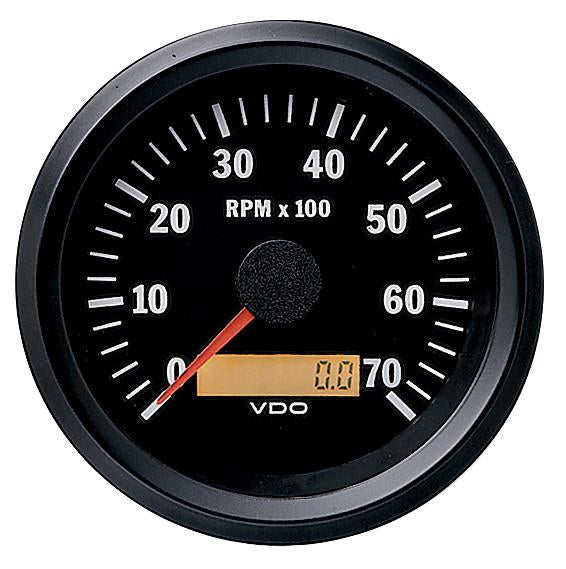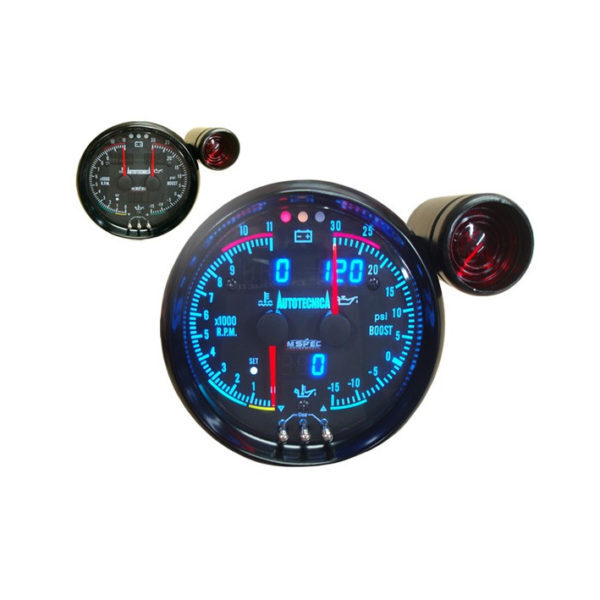Boost Your Driving Experience with a Dependable Tachometer
Boost Your Driving Experience with a Dependable Tachometer
Blog Article
The Significance of a Tachometer in Checking Engine Rate and Efficiency in Automotive Applications
In the world of auto engineering, the tachometer stands as a critical tool in the motorist's toolbox, offering a straight window into the internal operations of a car's engine. Past its feature as a mere scale of changes per minute (RPM), the tachometer serves as a critical device for fanatics and specialists alike, offering real-time understandings into engine efficiency and health.
Relevance of Monitoring Engine RPM
Keeping an eye on engine RPM, or revolutions per min, is an important element of vehicle maintenance and efficiency assessment. Engine RPM straight correlates with the speed at which the engine's crankshaft turns, showing how promptly the engine is running - tachometer. By checking RPM, technicians can analyze the wellness of the engine, discover potential issues, and fine-tune performance. An unusual RPM reading might indicate issues such as engine misfires, malfunctioning ignition system, or concerns with the fuel distribution system. Consistently high RPM readings can show hostile driving practices or the need for a higher gear change to boost fuel performance.
Additionally, keeping track of engine RPM is vital for performance analysis in auto racing and high-performance cars. Preserving optimum RPM levels is critical for accomplishing peak power result and acceleration. Racers typically make use of tachometers to ensure they are running within the ideal RPM variety for maximum performance. In summary, keeping track of engine RPM is not just important for identifying issues but likewise for maximizing engine efficiency in different automotive applications.

Benefits of Real-Time Data
In automotive applications, real-time information plays a vital role in offering immediate insights into the performance and problem of the lorry. By constantly checking numerous parameters such as engine speed, temperature, fuel usage, and extra, real-time data supplies numerous benefits that add to enhanced performance and security on the roadway.
One considerable advantage of real-time information is its capability to alert vehicle drivers and professionals to any kind of abnormalities or concerns quickly. This proactive method enables quick identification of potential problems, allowing for timely treatments to stop further damage or break downs. Additionally, real-time information helps with efficiency optimization by providing immediate responses on driving routines and engine effectiveness. Drivers can adjust their behavior in real-time based upon this info to accomplish better gas economic climate and extend the lifespan of their car.

Moreover, real-time data plays a crucial role in modern vehicle diagnostics, making it possible for professionals to here are the findings rapidly diagnose and deal with breakdowns. This results in decreased downtime, lower upkeep prices, and inevitably, boosted total vehicle reliability and long life (tachometer). By utilizing the power of real-time data, automotive stakeholders can make educated choices that favorably influence both the performance and long life of the car
Influence On Gear Shifts
The tachometer plays a vital role in enhancing gear changes by offering real-time engine rate data to the motorist. When coming close to the redline on the tachometer, it indicates the chauffeur to upshift to stop over-revving the engine and triggering potential damages.
Additionally, the tachometer help in attaining smoother gear shifts, especially in hand-operated transmissions. By keeping an eye on engine rate, vehicle drivers can carry out gear changes at the optimum RPM variety, decreasing snagging movements and decreasing endure the transmission components. This accuracy in equipment adjustments not just improves driving comfort yet additionally adds to sustain efficiency.
Enhancing Gas Effectiveness
Provided the critical role the tachometer plays in maximizing equipment changes for efficiency and engine wellness, it directly adds to making best use of gas efficiency in vehicle applications. By supplying real-time comments on engine rate, the tachometer aids vehicle drivers in preserving the most effective RPM variety for gas economic climate. When motorists constantly keep track of the tachometer and adjust their driving routines as necessary, they can avoid unneeded fuel intake created by over-revving or hauling the engine.
Furthermore, the tachometer assists motorists identify the most fuel-efficient gear to be in at any given minute, stopping the engine from working more challenging than necessary. This is especially critical during velocity and travelling, where being in the ideal gear can considerably impact fuel efficiency. Furthermore, the tachometer can alert chauffeurs to prospective mechanical issues that could be adversely affecting gas economy, such as a sliding clutch or a clogged air filter. To conclude, the tachometer acts as other a useful tool in improving gas effectiveness by advertising optimum driving behaviors and determining areas for improvement in the lorry's performance.

Taking Full Advantage Of Engine Durability
The tachometer's role in keeping track of engine speed and efficiency is important in ensuring the longevity of automobile engines. Checking the tachometer permits drivers to remain within the advised RPM variety for their vehicle, protecting against unnecessary strain on the engine and expanding its life-span.

Conclusion
To conclude, the tachometer plays a crucial function in keeping track of engine rate and performance in auto applications. By providing real-time data on RPM, it permits efficient equipment shifts, boosted fuel effectiveness, and taken full advantage of engine durability. This tool is important for maintaining optimum engine efficiency and making certain the overall functionality of a lorry.
Report this page